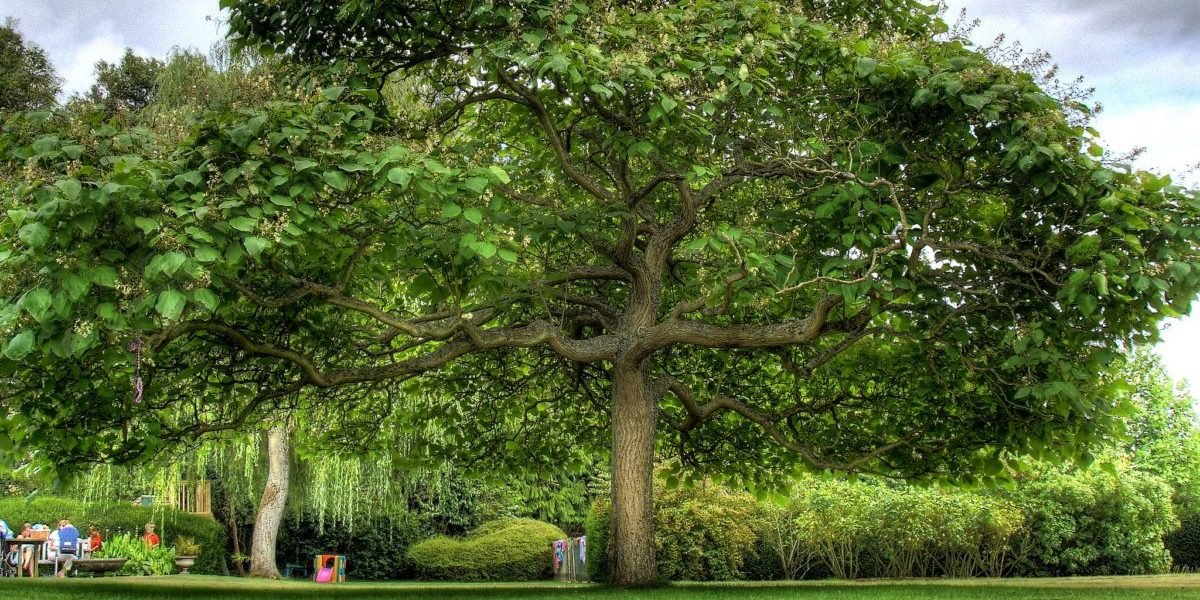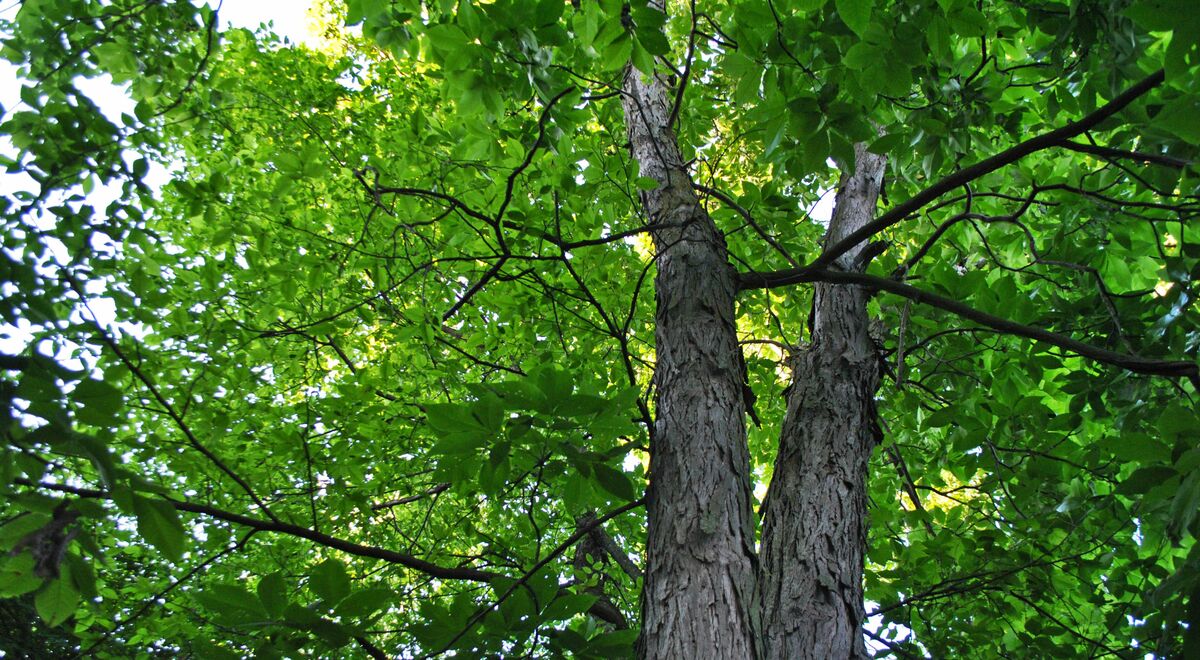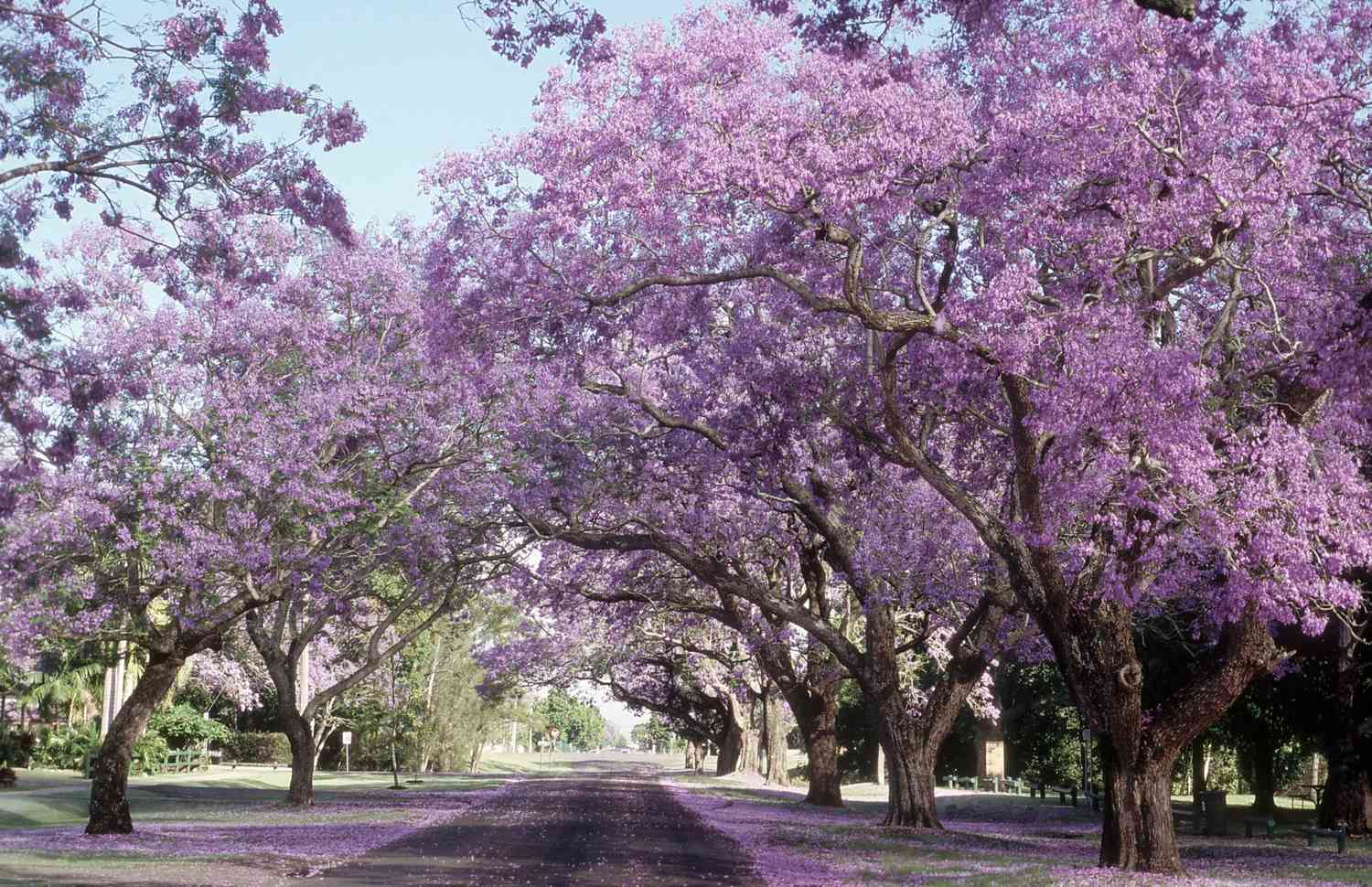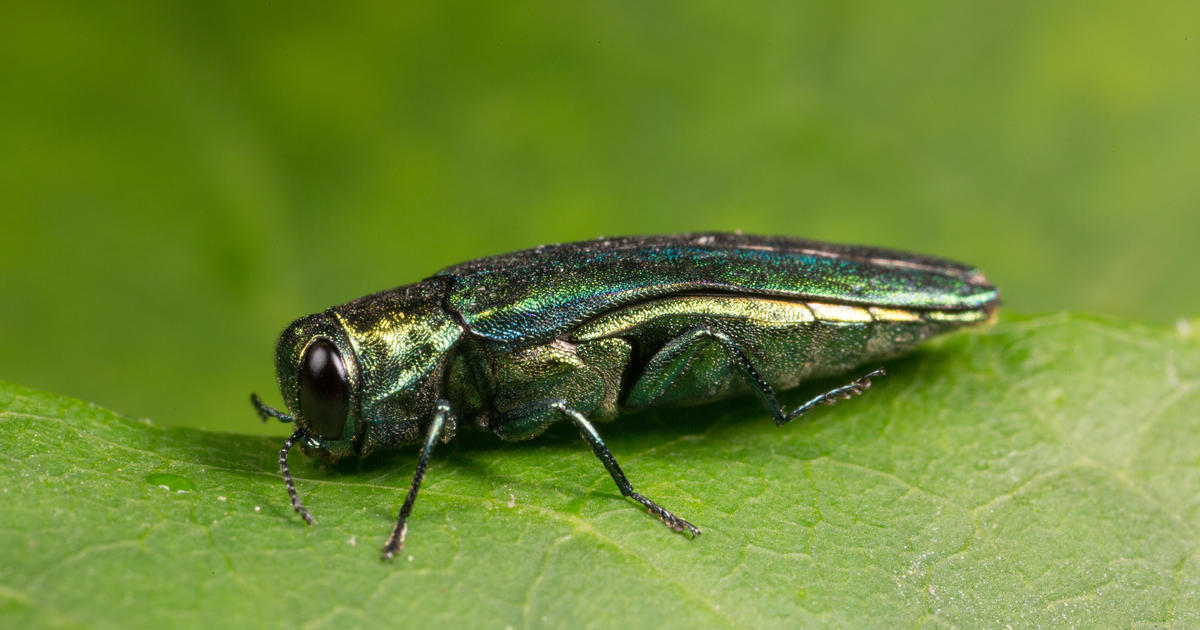Home>Gardening News and Trends>Latest News>What Are The Biggest Trees In The World
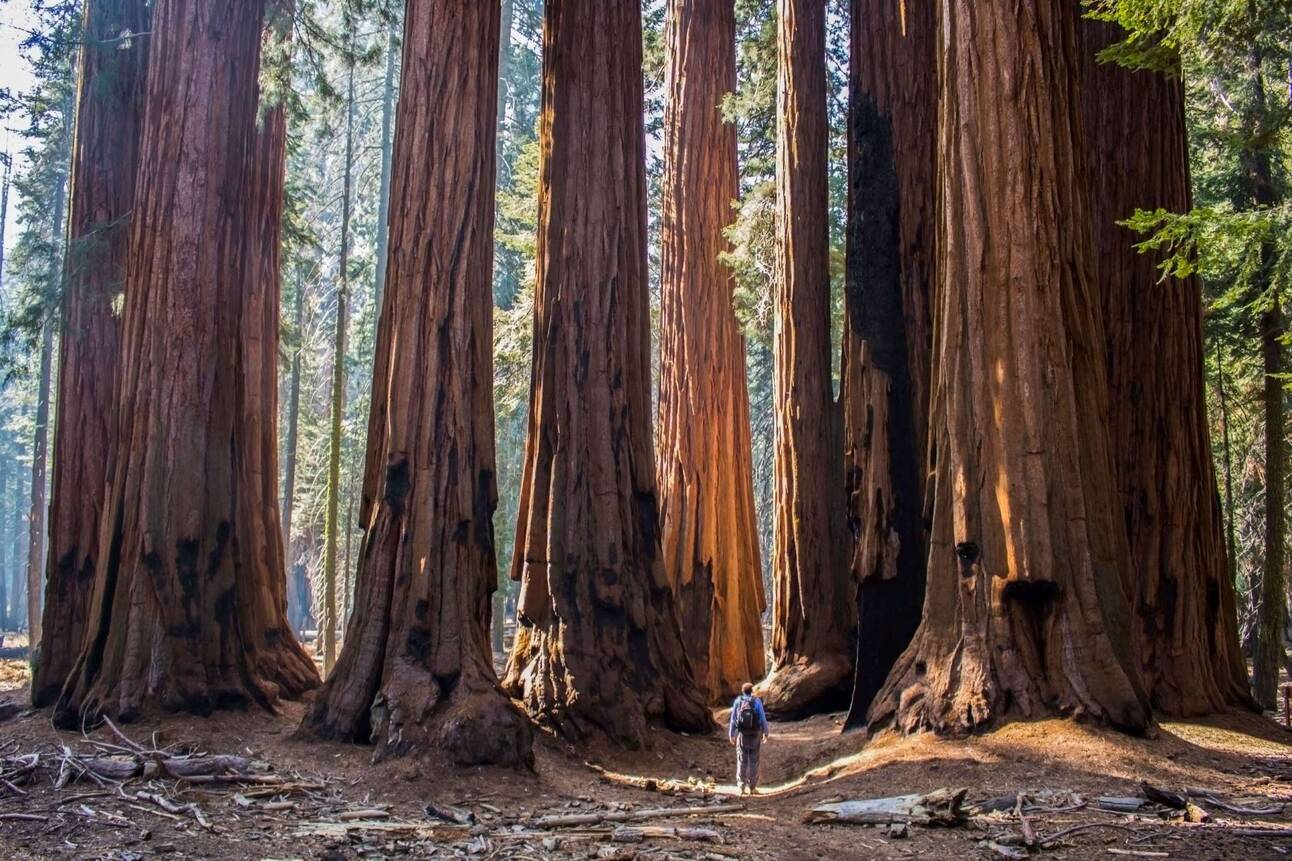

Latest News
What Are The Biggest Trees In The World
Modified: January 22, 2024
Discover the latest news on the biggest trees in the world. Explore fascinating facts, records, and natural wonders in this informative article.
(Many of the links in this article redirect to a specific reviewed product. Your purchase of these products through affiliate links helps to generate commission for Chicagolandgardening.com, at no extra cost. Learn more)
Table of Contents
Introduction
When we think about trees, we often envision the lush green leaves, sturdy trunks, and branches reaching towards the sky. However, some trees stand out from the rest, not only in terms of their majestic beauty but also in their sheer size. These extraordinary trees are known as the giants of the plant kingdom, with towering heights and impressive girth.
In this article, we will explore the world of the biggest trees, marveling at their incredible dimensions and learning about the different species that hold the title for being the largest. From the coastal giants of California to the ancient wonders of the mountains, these magnificent trees have fascinated nature enthusiasts and conservationists alike.
The size of a tree is typically measured based on its height, circumference, and overall volume. The quest to find the biggest trees has led to some remarkable discoveries, with each species having its unique characteristics and adaptations that help them grow to such extraordinary sizes.
As we delve into the world of these arboreal wonders, it’s important to appreciate the vital role these trees play in the ecosystem. Many of these large trees provide crucial habitats for various animal species, contribute to the oxygen production, and have cultural and historical significance.
Join us on this journey to discover some of the mightiest trees that grace our planet. We will explore iconic species such as the Sequoia trees of North America, the giant Baobabs of Africa, and many others that leave us in awe of nature’s grandeur. Grab your magnifying glass and let’s embark on this adventure through the realm of the biggest trees in the world!
General Characteristics of Big Trees
Big trees possess several distinctive features that set them apart from their smaller counterparts. These characteristics not only contribute to their massive size but also play a crucial role in their survival and ability to thrive in their respective environments.
One of the primary factors that contribute to the growth of big trees is their long lifespan. These trees often live for several centuries, allowing them ample time to reach incredible heights and develop substantial girth. The combination of longevity and slow growth rate enables them to accumulate substantial biomass over time.
An essential characteristic of big trees is their robust root system. To support their massive size, these trees require an extensive network of roots that provide stability and access to essential nutrients and water sources. The roots of big trees often spread out wide and deep into the soil, allowing them to withstand strong winds and access resources in a larger area.
In addition to their root systems, big trees have sturdy and thick trunks. These trunks are composed of various layers, including the outer bark, cambium layer, and inner core. The outer bark serves as a protective shield against external elements and helps prevent diseases and insect infestations.
The cambium layer, located beneath the outer bark, is responsible for the growth of the tree. It produces new cells that contribute to the increase in girth or circumference of the trunk. The inner core of the tree contains heartwood, which provides structural support to the tree, allowing it to withstand the immense forces it experiences.
Another critical characteristic of big trees is their ability to adapt to their surroundings. These trees have evolved unique adaptations that allow them to survive in different climates and ecosystems. Some big trees, like the Sequoias and Coast Redwoods, are well-adapted to tolerate drought conditions, while others, like the Baobabs of Africa, have adapted to withstand harsh arid environments.
Big trees also provide vital ecological services. They act as significant carbon sinks, absorbing carbon dioxide from the atmosphere through photosynthesis and storing it in their tissues. This plays a crucial role in mitigating climate change and reducing greenhouse gas emissions.
Now that we have explored the general characteristics of big trees, let’s dive deeper into some of the specific species that hold the title for being the largest trees in the world.
Sequoia Trees
Sequoia trees, also known as giant sequoias, are one of the most iconic and awe-inspiring tree species in the world. These majestic giants can reach heights of over 300 feet (91 meters) and have a massive girth of up to 102 feet (31 meters). They are commonly found in the Sierra Nevada mountain range of California, USA.
One of the most famous and largest sequoia trees is the General Sherman Tree, located in the Sequoia National Park. It stands at an astonishing height of 275 feet (84 meters) and has a circumference of approximately 103 feet (31 meters). This colossal tree is estimated to be around 2,200 years old, making it one of the oldest living organisms on Earth.
The adaptability of sequoias to their environment is fascinating. These trees have a thick bark that can grow up to 2 feet (0.6 meters) in thickness, providing protection against forest fires. The bark also contains tannins, which have antifungal and antibacterial properties, further aiding in their survival.
Sequoias have a unique reproductive strategy. They rely on wildfires to open their pinecones and release the seeds. The heat from the fire allows the cones to open, and the ashes provide fertile soil for the seeds to germinate. This fascinating adaptation ensures the continuation of the sequoia species.
In recent years, the conservation of sequoia trees has become an important focus. The destruction of their habitats due to logging and urban development poses a significant threat to their existence. Efforts are underway to protect these magnificent trees and ensure their preservation for future generations to admire.
Visiting a sequoia grove is a transformative experience. Standing amidst these ancient giants invites a sense of awe and reverence for the wonders of nature. The sight of these colossal trees, with their towering presence, evokes a deep appreciation for the beauty and resilience of our natural world.
Now that we have explored the incredible sequoia trees, let’s proceed to discover another remarkable species that holds a significant place among the biggest trees in the world.
Coast Redwood Trees
The coast redwood trees, scientifically known as Sequoia sempervirens, are renowned for their remarkable height and magnificent beauty. These giant trees are native to the coastal regions of northern California and southwestern Oregon in the United States.
Coast redwoods are considered the tallest trees on Earth, with some individuals reaching heights of over 350 feet (107 meters). The iconic Hyperion, discovered in 2006, stands as the world’s tallest known living coast redwood, measuring an awe-inspiring 379.7 feet (115.7 meters) in height.
The coast redwood’s ability to reach such towering heights can be attributed to its unique characteristics. These trees have a straight and cylindrical trunk that can grow to remarkable dimensions, reaching diameters of up to 22 feet (7 meters). Their branches are high up on the trunk, forming a dense canopy that captures sunlight and supports the growth of smaller plants and organisms.
This species has adapted to the foggy and humid coastal climate. The moist environment provides the much-needed moisture for their growth and survival. The thick bark of the coast redwoods helps to retain moisture, providing resilience against wildfires and protecting the tree from pests and diseases.
Coast redwoods also have a remarkable capacity for regeneration. They can sprout from stumps, fallen logs, or even fire-damaged trunks, allowing them to persist and continue their growth. This resilience has enabled these magnificent trees to survive for thousands of years.
Conservation efforts have been crucial in protecting and preserving coast redwood forests. Organizations and national parks, such as Redwood National and State Parks, have been established to safeguard these ancient groves. Efforts to acquire and restore old-growth forests have also played a key role in ensuring the survival of this magnificent species.
Visiting a coast redwood forest is a humbling experience. Walking amidst these towering giants, with their lush green foliage and ethereal beauty, evokes a profound sense of awe and connection to the natural world. Exploring the tranquility of these ancient forests is a testament to the resilience and grandeur of nature.
Now that we have explored the breathtaking coast redwood trees, let’s move on to discover another incredible species that stands tall among the largest trees in the world.
Mountain Ash Trees
Mountain ash trees, scientifically known as Eucalyptus regnans, are renowned for their towering heights and impressive dimensions. These magnificent trees are native to the mountainous regions of southeastern Australia, primarily in the state of Victoria.
Mountain ash trees are among the tallest flowering plants on the planet, with some individuals reaching heights of over 330 feet (100 meters). The tallest known mountain ash, named Centurion, stands at a towering height of 327.5 feet (99.82 meters), making it one of the tallest trees in the world.
One of the factors contributing to the remarkable height of mountain ash trees is their fast growth rate. These trees can add several feet to their height per year, allowing them to reach astounding heights within a relatively short time frame. Additionally, their straight and slender trunks and their ability to grow on nutrient-rich mountain slopes contribute to their towering stature.
Mountain ash trees have distinct bark characteristics. As juveniles, their bark is smooth and grey, gradually developing rough and fibrous bark as they age. This unique bark texture provides protection against fires and helps the tree resist damage from environmental factors.
Another fascinating aspect of mountain ash trees is their role in supporting a diverse range of wildlife. The dense foliage and abundance of nectar-rich flowers attract a variety of birds, including colorful parrots and honeyeaters. These trees also provide crucial habitat for mammals such as the critically endangered Leadbeater’s possum.
Conservation efforts have been paramount in protecting and preserving the mountain ash forests. These forests are considered vital ecosystems, providing crucial ecosystem services such as carbon sequestration, water regulation, and supporting biodiversity. Efforts are underway to protect these forests from deforestation and the threats posed by logging and natural disasters.
Exploring a mountain ash forest is an enchanting experience. Walking beneath the towering canopy, surrounded by the soft dappled light filtering through the leaves, one can’t help but be in awe of the sheer magnitude and beauty of these grand trees. These ancient forests provide a glimpse into the majesty and resilience of nature.
Now that we have marveled at the incredible mountain ash trees, let’s proceed to discover another remarkable species that holds its place among the biggest trees in the world.
Giant Sequoia Trees
Giant sequoia trees, scientifically known as Sequoiadendron giganteum, are a true testament to the wonders of nature. These majestic trees can be found in select groves along the western slopes of the Sierra Nevada mountains in California, USA.
Although giant sequoias may not reach the same astounding heights as coast redwoods, they are known for their massive girth and voluminous size. These trees can grow to have a trunk diameter of up to 30 feet (9 meters) or more, and their total volume can exceed 52,000 cubic feet (1,470 cubic meters). This makes them one of the largest trees by volume in the world.
Giant sequoias also have remarkable longevity, with some individuals living for over 3,000 years. The General Sherman Tree, located in Sequoia National Park, is considered the largest known living tree by volume. It stands at an impressive height of 275 feet (84 meters) and has a estimated volume of 52,500 cubic feet (1,487 cubic meters).
The fire resilience and adaptation of giant sequoias are truly remarkable. Their bark is thick and fibrous, acting as a protective shield against wildfires. In fact, the heat from a fire actually helps to release the seeds from their cones, promoting regeneration and growth.
Giant sequoias also possess an intricate network of shallow roots that extend wide from the trunk, allowing them to gather moisture from the forest floor. These roots provide stability to the trees and play a crucial role in their ability to withstand strong winds and harsh environmental conditions.
Conservation efforts play a crucial role in safeguarding the giant sequoia forests. National parks and protected areas have been established to preserve these magnificent groves. Additionally, research and monitoring programs help to better understand and manage the threats these trees face, such as climate change and forest disturbances.
Walking among the giant sequoias is a humbling experience. Standing beneath their towering presence, it’s impossible not to feel a sense of awe and reverence for these ancient giants. These grand trees serve as a reminder of the power and beauty of nature, and the importance of conserving and protecting our natural heritage.
Now that we have marveled at the incredible giant sequoia trees, let’s move on to discover another remarkable species that holds a place among the largest trees in the world.
Baobab Trees
Baobab trees, scientifically known as Adansonia, are iconic and peculiar trees that are native to the African continent. These magnificent giants are renowned for their enormous size and distinct appearance, making them a symbol of the African savannah.
Baobabs have a unique and recognizable silhouette, with thick trunks that can reach diameters of up to 36 feet (11 meters) and heights of over 82 feet (25 meters). These impressive dimensions make baobabs some of the largest trees in Africa.
One of the most famous baobabs is the “Big Baobab” of South Africa, which has a trunk diameter of over 31 feet (9.5 meters) and is estimated to be around 6,000 years old. This monumental tree is not only a natural wonder but has also been used as a pub, with a large hollow trunk that can accommodate up to 60 people.
Baobabs have adapted to survive in arid climates, making them a vital source of water and sustenance for both wildlife and local communities. These trees can store vast amounts of water in their trunks, which helps them withstand long periods of drought. In addition, baobabs produce nutrient-rich fruits that are sought after by various animals, including elephants and baboons.
Baobabs also play a crucial role in the social and cultural fabric of Africa. Many communities hold these trees in high regard, considering them sacred and associating them with legends and traditions. The hollow trunks of baobabs have been used for various purposes, including as shelter, storage, and even as burial chambers.
Despite their cultural significance and ecological importance, baobabs face increasing threats. Climate change, land degradation, and human activities such as deforestation pose significant challenges to the survival of these ancient giants. Conservation efforts are critical to protect and preserve baobab populations for future generations.
Witnessing a baobab tree in person is a surreal experience. Whether standing beneath their immense branches or exploring the hollow trunk, one cannot help but be in awe of their magnificence. Baobabs are a living testament to the resilience and beauty of nature, and they continue to captivate the hearts and minds of those who encounter them.
Now that we have marveled at the incredible baobab trees, let’s move on to discover another remarkable species that stands tall among the largest trees in the world.
Kapok Trees
Kapok trees, scientifically known as Ceiba pentandra, are majestic trees native to the rainforests of Central and South America, as well as several parts of Africa and Southeast Asia. These towering giants, also known as silk cotton trees, are renowned for their impressive size and ecological significance.
Kapok trees can reach heights of up to 200 feet (61 meters) and have a straight, slender trunk with buttress roots that provide stability and support in the rainforest ecosystems they inhabit. The trunks of kapok trees are often covered in sharp, spiky thorns to deter animals from climbing them.
One of the most remarkable features of kapok trees is their enormous canopy. Their branches spread out widely, creating a dense cover of large, palmate leaves that provide shade and shelter for a diverse range of wildlife. This canopy also hosts vibrant ecosystems, with numerous epiphytes, mosses, and orchids thriving in the branches.
Kapok trees are known for their large, showy flowers. These flowers, usually white or pale pink in color, attract a variety of pollinators, including bats and bees. The pollinated flowers give way to large, pear-shaped fruit capsules that contain fluffy cotton-like fibers surrounding the seeds.
The fibers inside the kapok fruit have a multitude of uses. They are buoyant, water-resistant, and lightweight, making them ideal for stuffing pillows, mattresses, and life vests. The kapok fiber has been traditionally used by indigenous communities for various purposes, such as making clothing, ropes, and even insulation materials.
Due to their size and grandeur, kapok trees hold cultural and spiritual significance in many communities. They are often considered sacred and are incorporated into local folklore and traditions.
Conservation efforts are crucial for the preservation of kapok trees and their habitats. Deforestation and land conversion pose significant threats to these magnificent trees. Protecting and restoring rainforest ecosystems not only ensures the survival of kapok trees but also safeguards the biodiversity and ecological services they provide.
Encountering a kapok tree in the wild is an awe-inspiring experience. Standing beneath the towering canopy, with sunlight filtering through the leaves and the sounds of the rainforest enveloping you, one can’t help but feel a profound connection to nature’s splendor.
Now that we have explored the remarkable kapok trees, let’s continue our journey to discover another incredible species that holds its place among the biggest trees in the world.
Yellow Meranti Trees
Yellow Meranti trees, scientifically known as Shorea faguetiana, are remarkable giants that dominate the rainforests of Southeast Asia. These majestic trees are part of the Dipterocarpaceae family and are renowned for their towering heights and immense girth.
Yellow Meranti trees are among the tallest trees in the world, capable of reaching heights of over 280 feet (85 meters). They have a straight trunk with smooth, gray bark that becomes rough and flaky with age. The massive girth of these trees can exceed 13 feet (4 meters), making them a true sight to behold.
The crown of a mature Yellow Meranti tree is a spectacle in itself, with a dense canopy of large, glossy leaves that create a verdant umbrella. This lush foliage provides ample shade and protection for the biodiversity that thrives within the rainforest ecosystem.
Yellow Meranti trees play a vital role in maintaining the fragile balance of the rainforest. They are keystone species, meaning that their presence greatly influences the structure and composition of their habitat. These trees provide essential food and habitat for various species, including primates, birds, and insects, contributing to the biodiversity and overall health of the forest.
Wood from Yellow Meranti trees is highly valuable and sought after in the timber industry. The wood is known for its durability and is used in construction, furniture making, and other woodworking applications. However, the unsustainable logging of these trees poses a significant threat to their populations and the delicate ecosystems they support.
Conservation efforts are essential for the protection of Yellow Meranti trees and the preservation of their habitats. Establishing protected areas and implementing sustainable logging practices are crucial steps in ensuring the long-term survival of these remarkable giants.
Encountering a towering Yellow Meranti tree in the rainforest is a humbling experience. Standing beneath its immense canopy, listening to the chorus of jungle sounds, and witnessing the intricate web of life that depends on these majestic giants, instills a deep appreciation for the wonders of the natural world.
Now that we have marveled at the incredible Yellow Meranti trees, let’s continue our journey to discover another extraordinary species that stands tall among the largest trees in the world.
Bristlecone Pine Trees
Bristlecone pine trees, scientifically known as Pinus longaeva, are fascinating and resilient trees that thrive in harsh and high-altitude environments. These ancient trees have earned their place among the biggest and longest-lived organisms on Earth, with some individuals exceeding 5,000 years in age.
Bristlecone pines are typically found in the mountainous regions of the western United States, including the White Mountains of California, Nevada, and Utah. They have adapted to survive in extreme conditions, such as cold temperatures, strong winds, and nutrient-poor soils.
These trees are known for their twisted and gnarled appearance, with their reddish-brown bark and unique bristle-like needles. The name “bristlecone” refers to the characteristic spiky bristles found on the female cones of these trees.
The ability of bristlecone pines to withstand harsh conditions and live for thousands of years can be attributed to several factors. One key adaptation is their slow growth rate, allowing them to conserve resources and adapt to the challenging mountain environments over a long period of time.
Bristlecone pines possess dense wood with high resin content, which makes them highly resistant to diseases, insect infestations, and decay. This durability contributes to their remarkable longevity and the preservation of their ancient wood.
One of the most famous specimens of bristlecone pines is the Methuselah Tree, located in the White Mountains of California. This tree is estimated to be around 4,900 years old, making it one of the oldest known living organisms on the planet.
Conservation efforts are essential for the protection of bristlecone pines and their delicate ecosystems. Given their slow growth and vulnerability to climate change, it is vital to preserve and manage their habitats to ensure their continued survival for generations to come.
Encountering a bristlecone pine forest is a mesmerizing experience. Walking amidst these ancient trees, with their weathered bark and twisted branches, transports you to a different time and instills a profound sense of respect for the enduring nature of life.
Now that we have marveled at the exceptional bristlecone pine trees, we have explored some of the most significant and extraordinary species among the biggest trees in the world.
Conclusion
The world of the biggest trees is a breathtaking realm where nature showcases its grandeur and resilience. From the towering sequoias and coast redwoods of North America to the majestic baobabs of Africa, these remarkable trees captivate us with their incredible size and beauty. Each species has its unique characteristics and adaptations that have allowed them to grow to such colossal proportions.
These massive trees play a vital role in the ecosystems they inhabit, providing habitats for countless organisms, contributing to carbon sequestration, regulating water cycles, and enriching the soil. They also hold cultural and historical significance, inspiring awe and reverence among those who encounter them.
However, these giants face numerous threats, including deforestation, climate change, and habitat loss. It is crucial that we take immediate action to protect and conserve these magnificent trees for future generations to appreciate.
Exploring the world of the biggest trees is not just about their remarkable dimensions, but also about the connection they foster with nature. Standing beneath their immense canopies, witnessing their endurance in challenging environments, and experiencing the beauty of these ancient giants is a humbling and transformative experience.
Let us admire and respect these arboreal wonders, and let their magnificence inspire us to become better stewards of our planet. By preserving and conserving the habitats of these incredible trees, we ensure that future generations can continue to marvel at the splendor of the world’s biggest trees.
